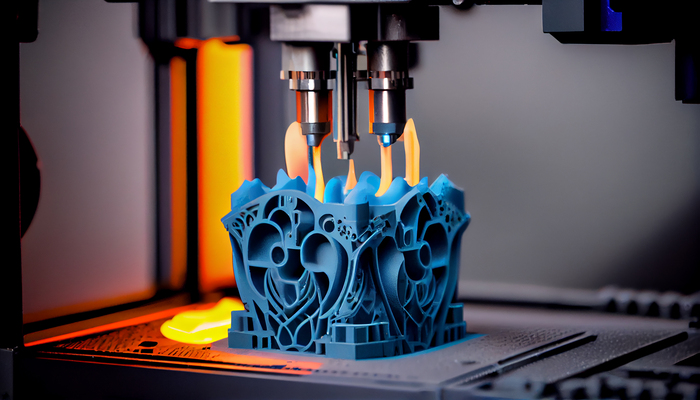Investing in 3D printing Startups is quickly becoming one of the most exciting opportunities in the manufacturing world. With the potential to revolutionize industries and offer innovative solutions, 3D printing is a game-changer that investors can’t afford to overlook.
As traditional manufacturing processes face growing challenges, the rise of 3D printing startups offers a fresh, cost-effective alternative. South Africa, in particular, is poised to reap the benefits of this technology, with opportunities to drive innovation, sustainability, and efficiency.
Curious about how you can get in on the action? Keep reading to discover why Investing in 3D printing Startups is a smart move and how it can transform the future of manufacturing.
The 3D Printing Revolution
3D printing, also known as additive manufacturing, has evolved from a niche technology used primarily for prototyping to a mainstream manufacturing process. This process involves creating objects layer by layer from a digital file.
Unlike traditional subtractive manufacturing, which cuts away material from a larger block, 3D printing uses only the material required for the product. This reduces waste, enhances precision, and allows for complex designs that were previously impossible to achieve.
In South Africa, the manufacturing industry is a significant contributor to the country’s economy, but it has faced challenges such as high production costs, limited flexibility, and an over-reliance on imported components. Investing in 3D printing Startups presents an opportunity to address these issues while fostering innovation and creating new industries.
Why 3D Printing is a Game-Changer for South Africa
- Cost-Effective Production
For many years, traditional manufacturing processes have been expensive, especially when dealing with low-volume production or customized products. With Investing in 3D printing Startups, entrepreneurs can access a more cost-effective solution. The technology eliminates the need for expensive tooling, molds, and large-scale production lines, allowing businesses to produce high-quality products at a fraction of the cost.
In South Africa, where the cost of manufacturing is often a barrier for new businesses, 3D printing offers a more affordable entry point for startups. By reducing overhead and material waste, businesses can save money and pass those savings onto consumers, which ultimately benefits the local economy.
- Customization and Flexibility
One of the biggest advantages of 3D printing is its ability to create custom products on demand. Traditional manufacturing processes are typically designed for mass production, which can make customization expensive and time-consuming. With Investing in 3D printing Startups, South African companies can produce bespoke products tailored to the needs of individual customers.
This is particularly important in industries like healthcare, where customized prosthetics or medical devices can be produced quickly and affordably. South Africa’s growing healthcare sector can greatly benefit from 3D printing’s ability to produce custom solutions, reducing the reliance on imported medical equipment and lowering costs for patients.
- Sustainability and Reduced Waste
As the world becomes increasingly aware of the environmental impact of manufacturing, sustainability has become a top priority. Investing in 3D printing Startups offers an opportunity to support businesses that prioritize sustainability. Unlike traditional manufacturing, where excess material is often wasted, 3D printing uses only the material necessary to create the product, resulting in less waste and energy consumption.
In South Africa, where environmental challenges such as water scarcity and energy inefficiency are prevalent, 3D printing provides a viable solution to reduce the carbon footprint of the manufacturing sector. By supporting startups that embrace this technology, investors can help drive the shift towards more sustainable production practices.
- Fostering Innovation and Local Manufacturing
South Africa has a rich history of innovation, and the advent of 3D printing offers a unique opportunity to build on that legacy. Investing in 3D printing Startups fosters innovation by allowing entrepreneurs to create new products and industries that were previously not possible. Whether it’s developing new materials, creating novel designs, or building local manufacturing capabilities, 3D printing has the potential to revolutionize the way South Africa approaches production.
With Investing in 3D printing Startups, South African businesses can reduce their dependency on foreign manufacturers and bring production closer to home. This can lead to the creation of new jobs and industries, helping to boost the country’s economy and reduce unemployment.
Key Sectors to Watch in South Africa
Several sectors in South Africa stand to benefit greatly from the rise of 3D printing. As an investor, it’s essential to understand the specific industries where Investing in 3D printing Startups can have the most significant impact.
- Automotive Industry
South Africa has a well-established automotive industry, with numerous global manufacturers operating in the country. Investing in 3D printing Startups within this sector can lead to more efficient manufacturing processes, the production of lighter and stronger vehicle parts, and the ability to prototype components quickly. 3D printing can also help reduce costs associated with tooling and the production of spare parts, offering a more sustainable solution to the automotive supply chain.
- Healthcare and Medical Devices
The healthcare sector in South Africa is rapidly expanding, with increasing demand for medical equipment and devices. 3D printing has the potential to revolutionize the production of medical devices, from prosthetics to surgical tools, making them more affordable and accessible.
Investing in 3D printing Startups within the medical field can provide groundbreaking solutions that improve the quality of care and enhance the patient experience.
- Construction and Architecture
The construction industry in South Africa faces several challenges, including high material costs, labor shortages, and delays in project timelines. 3D printing technology offers a solution to these problems by enabling the creation of complex architectural designs, reducing the need for manual labor, and accelerating the construction process.
Investing in 3D printing Startups in this sector can lead to more affordable housing and infrastructure projects that meet the needs of the country’s growing population.
- Consumer Products and Fashion
3D printing has already made waves in the fashion industry, allowing designers to create unique clothing, accessories, and footwear. In South Africa, Investing in 3D printing Startups in the fashion and consumer products sectors can unlock new opportunities for local designers to create one-of-a-kind products and reduce their reliance on imported goods.
This can foster the growth of a local creative economy while providing consumers with access to more affordable, sustainable options.
Risks and Considerations for Investors
While Investing in 3D printing Startups in South Africa presents numerous opportunities, it’s essential to consider the potential risks. As with any emerging technology, there are uncertainties around regulatory frameworks, the adoption rate of 3D printing, and the potential for competition from larger companies.
It’s important for investors to conduct thorough research, assess the scalability of startups, and understand the market demand for 3D-printed products before making any investment decisions.
Conclusion
Investing in 3D printing Startups in South Africa presents an exciting opportunity to be part of a transformative shift in the manufacturing sector. With its potential for cost reduction, customization, sustainability, and innovation, 3D printing is reshaping industries and creating new possibilities for businesses.
For investors in South Africa, this emerging market offers a chance to support startups that can drive economic growth, create jobs, and position the country as a leader in the global manufacturing revolution. As 3D printing continues to evolve, the possibilities are endless for those who take the leap and invest in the future of manufacturing.





